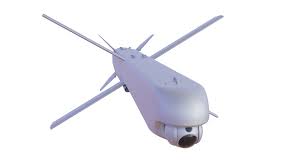By: Arie Egozi
Israeli defense company Rafael has announced transformative upgrades to its Spike family of missiles, with advanced loitering capabilities directly powered by artificial intelligence (AI). These enhancements mark a shift toward more effective, autonomous operations across air, ground and naval platforms and position AI-enabled loitering munition systems at the forefront of future warfare strategy.
AI Integration Accelerates Combat Effectiveness
According to Israeli sources, AI dramatically increases the efficiency and precision of loitering munitions. By leveraging AI and machine learning (ML), these weapons now autonomously detect, track and engage targets. Thiis reduces human workload and shortens decision cycles. Real-time sensor data analysis enables the identification and prioritization of battlefield threats even under challenging conditions, such as GPS denial or rapidly changing environments.
AI also improves strike accuracy, limits collateral risk and facilitates flexible mission options, such as mid-flight aborts or re-targeting. Advanced algorithms can process input from onboard electro-optical, infrared and radar systems to ensure effective detection and sustained tracking of elusive or hidden threats through visual obstructions.
Spike Family Embraces AI for Autonomous Targeting
The integration of AI in Rafael’s next-generation loitering systems dramatically boosts autonomy and operational flexibility in complex combat scenarios. Defense analyst Tal Inbar noted that this evolution arms loitering munitions with essential capabilities to locate and identify targets in real time, even in dense or contested environments.
The newly unveiled sixth-generation L-SPIKE system offers up to 30 minutes of loiter time and strike capability at ranges up to 40 kilometers. Its high speed, low signature, and multiple warhead options allow for precision engagement of moving or time-critical threats with minimal collateral damage. Designed for versatility, L-SPIKE can launch from ground, rotary or naval platforms and execute coordinated salvo attacks using up to four missiles simultaneously.
The Spike missile family includes SR (2 km), LR2 (5.5 km), ER2 (10 km) and NLOS (30 km) variants, each tailored for distinct battlefield needs. Enhanced autonomy means infantry teams gain dramatically increased survivability against modern tank threats equipped with advanced armor and optics. For naval forces, Spike ER2 launchers can now be deployed from compact patrol boats, which broadens tactical options at sea.
With its single-soldier operation and exceptionally low profile, Spike SR enables “shoot-and-scoot” tactics, vital to evade detection in high-intensity or hybrid warfare environments. Lithuania’s recent adoption of the Spike LR variant underscores growing international demand for these adaptable systems.
Expanding AI Across the Defense Market
AI-powered loitering munitions are providing military forces with smarter, faster, and more flexible solutions optimized for autonomous combat in today’s dynamic threat environment.
Other prominent Israeli defense firms, including Israel Aerospace Industries (IAI), are equipping their Mini Harpy and ROTEM loitering systems with AI-driven autonomous detection and targeting. These platforms offer either fully autonomous operation or human-in-the-loop control to further enhance battlefield decision-making and strike precision.
As deployment of these effective systems expands, the balance of tactical power on the modern battlefield continues to shift, driven by the relentless advance of AI.

